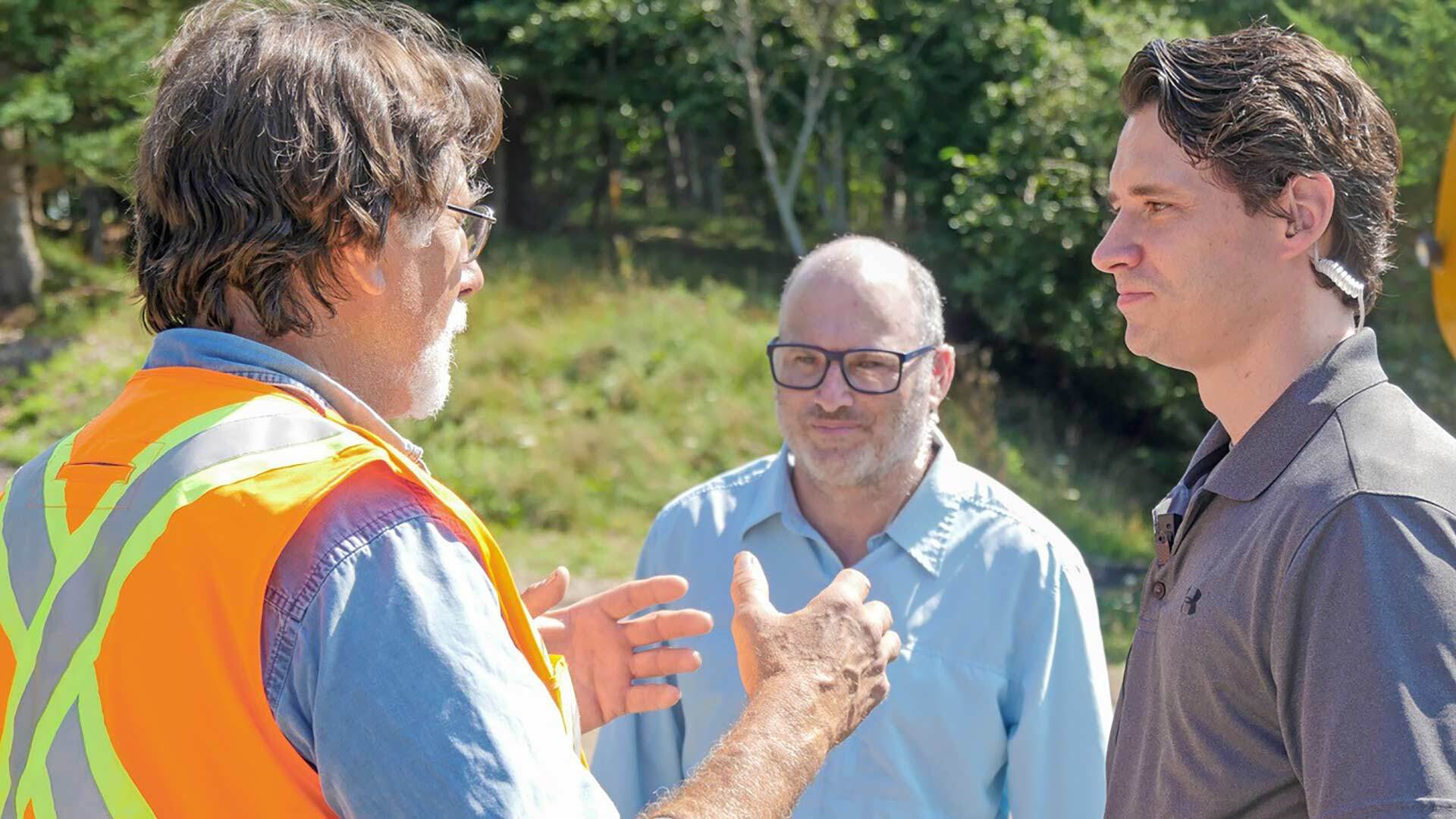Rick and Marty Lagina's ongoing quest to unearth Oak Island's legendary secrets and treasures, documented on The HISTORY Channel®'s hit show The Curse of Oak Island, makes for riveting, entertaining and occasionally nerve-wracking TV. The island's Nova Scotia location and archeological dig sites pose unique challenges for cast and crew. Two executive producers—showrunner Jon Levy and Joe Lessard (who also co-owns Prometheus Entertainment, the production company behind the show)—say the real curse of Oak Island may be the extreme weather and rugged terrain.
What time of year do you typically shoot on Oak Island?
Lessard: [Rick and Marty] like to get there around late May and work until it gets pretty brutal, usually about the beginning of November. But in our second year, we went up in February to scan the swamp with metal-detecting equipment. The only way to do that, pragmatically, at the time was when it was covered with ice, so we went up in the dead of February to shoot for a week. It was subzero every day, [with a] nasty wind chill and really cutting winds.
What goes into an average shoot?
Lessard:We have audio guys [following the cast], and Jon is leading the charge in the field. He's got two main producing partners. There are multiple things happening everywhere: archeology going on at sites, digs in the swamp, there's always Money Pit activity—[the Money Pit is a more than 100-feet deep shaft located on the east side of the island]—and metal detecting can be going on anywhere on the island. All simultaneously.
Levy: We try to be at every place as they're actually searching for the treasure, so usually five to seven cameras—GoPros everywhere, and other specialty cameras. We shoot about three terabytes of footage a day.
What's most challenging about filming on the island?
Lessard: Everything about Oak Island is challenging. Extreme elements due to its geographic location in the North Atlantic—The Maritimes.
When we first went there, we were a skeleton crew, not knowing what we were getting into, not knowing how this story was going to evolve. We dealt with trying to film in the winter, which was brutal… There are all kinds of things to navigate, whether it's weather or creepy crawlies.
Levy: Just because the weather gets bad doesn't mean we stop shooting. The best time to go metal detecting is in the rain, which makes the ground more conductive for the metals. Over the years, we've even dealt with hurricanes.

